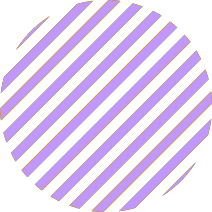This article addresses MMIWG as it’s referenced in the US and Canada. Native Hip Hop artist activist, women’s resources, and applicable laws are all discussed.
May 5 is the day to recognize Missing and Murdered Indigenous Women and Girls. This has been expanded to include “two spirit” and transgender, MMIWG2S+. The day of recognition is not limited to the Canadian First Nations, but is to be witnessed, recognized, and put into visible presence throughout North America.
Tribes across America have some connection to this matter, albeit on reservation territories or in urban centers. The negligence of this day, a day of recognition, remembrance, and mourning, is the voice for the reason why this matter is largely underrepresented in the public, non-Native communities. Silence by a lack of attention is not a resolution. Such a historic practice has been racially normalized throughout North America. Distorted education, limited political support, pop culture stereotypes, and racism across rural and urban centers are employed as a contemporary standard. The Native/Alaskan Entities population, as of 2024–2025, is noted by USA Facts as,“The current total population of Native Americans in the United States is 6.79 million, which is about 2.09% of the entire population. The racial distribution of the U.S. population shows that 0.88% are American Indian and Alaska Native” (USA Facts, May 2025).
The US Census released data on June 15, 2023, which provided startling statistics on the current identity, education, and relationship to fair housing, equity, and fair representation in the workforce.
“According to the newly released statistics, 2.7 million U.S. residents identified as American Indian and Alaska Native alone, and 6.3 million as American Indian and Alaska Native alone or in combination with one or more other races from 2017 to 2021.
“Among the population age 25 and over, 15.5% of the American Indian and Alaska Native alone, and 21.8% of the American Indian and Alaska Native alone or in combination with one or more other races had a bachelor’s degree or higher; of those, 5.3% of the American Indian and Alaska Native alone, and 7.8% of the American Indian and Alaska Native alone or in combination with one or more other races had a graduate or professional degree.
“The Selected Population Tables and the American Indian and Alaska Native Tables provide a unique and vital look at socioeconomic and housing data that are essential to these smaller populations,” said Rachel Marks, chief of the Racial Statistics Branch. “These tables provide communities with specialized statistics to support their needs” (US Census, June 2023).
Native/Indigenous women and girls are four times more likely to experience violence from the non-Native/Indigenous community. Native/Indigenous women and girls are twice as likely to suffer from violence by a current or former partner. Native/Indigenous women and girls are four times more likely to experience sexual violence from non-Native/Indigenous women. Between 2001–2014, the rate of homicide against Native/Indigenous women and girls was four times that of non-Native/Indigenous women (Assembly of First Nations, 2025).
These startling figures coincide with the basic fact that the total data of MMIWG2S+ remains largely inaccurate. The gross content of this issue, cold cases, and unreported situations leaves the data complicated at best to document. Activist and tribal agencies are faced with working nearly independently from political and local authorities to obtain credible attention to this matter, which borders on gender genocide. This fact positions Native/Indigenous women and girls as prime targets for sexual predators, sex trafficking, and domestic and community violence.
When Sisters Can’t Speak
Despite the often invisible attention to MMIWG, there are some valuable resources and agencies that are holding strong the mantle in solidarity and support for MMIWG.
What is Savanah’s Law?
“Savanna’s Act and Not Invisible Act, which were signed into law in 2020 to address the MMIWR crisis,” (National Indigenous Women’s Resource Center, 2025).
Savanna’s Act was the first to draw attention to MMIWG across the US. Canadian authorities, in 2023, released the
“2022–23 Federal Pathway Annual Progress Report. The report summarizes actions taken by nearly 20 federal departments and agencies to address and support the safety and wellbeing of Indigenous women, girls and 2SLGTBQI+ people, as well as their families and communities impacted by violence” (Government of Canada, 2023).
“The crisis of missing and murdered Indigenous women and girls is ongoing. With the magnitude of this ongoing national tragedy, we need to continue to work together on a comprehensive response to address the complexity and interconnectivity of its root causes, as well as address the need for accountability. As evidenced in the current Budget, we reaffirm our commitment to accelerate these efforts, through ongoing and further collaboration, investments, and initiatives, in order to create safety for all Indigenous women, girls and 2SLGBTQI+ people, no matter their circumstances. We have made this a priority and will not stop until their safety is no longer at risk” (Government of Canada, 2023).
The Honourable Marc Miller
Minister of Crown-Indigenous Relations
The attention to MMIWG is notwithstanding any one territory or country. It is a targeted gender genocide widely unnoticed in the non-Native/Indigenous communities. These two important legislations underscore the severity of the matter and claim immediate and full attention beyond the limited scope of tribal, rural, and urban communities.
Native Hip Hop As Discourse
[include selections and artists] Taking to the street (aka, the urban reservation), Native/Indigenous Hip Hop artists explore the importance of this issue. The works range from haunting to an elevated point of solidarity and recognition. One should take note of the dynamic collection from multiple artists/groups. The pointed nature of each track unfolds how younger generations are articulating positions of self-determination, socio-political justice, and sovereignty. Despite the political and local authorities’ lack of direct attention to MMIWG, Native/Indigenous Hip Hop artists elect not to wait to broadcast the serious nature of this matter.
HOW TO TAKE ACTION ON RED DRESS DAY
- Wear red on May 5 to show solidarity.
- Listen to the stories of survivors and families and amplify the voices with consent.
- Write to elected officials demanding full implementation of the 231 Calls for Justice.
- Attend local vigils, walks, and events (see below).
- Donate to Indigenous-led organizations and support land defenders.
- Educate yourself and your community about MMIWG2S+ issues.
- 16 things Canada can do now to end violence against Indigenous women and girls
The importance of this issue continues to linger. Take action to provide attention and urgency to this cause. Support of the female population is crucial to any cultural community. Solidarity for Native/Indigenous/First Nations women and girls is critical in these complex contemporary times. Allowing even one of these days to pass without witness or recognition is harmful to all communities.
Richard Luis Ragudo, Jr.
Indigenous Hip Hop Business Association (IHHBA), Co-founder, CFO, Marketing/Social Media Manager
Alan Lechusza
Indigenous Hip Hop Business Association (IHHBA), Co-founder, Managing Editor



